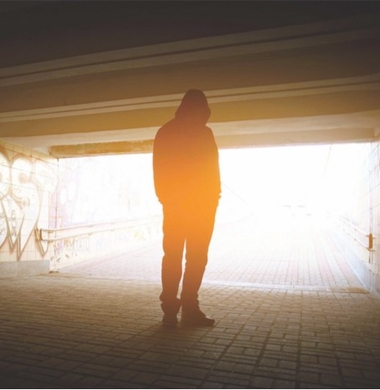Juvenile, criminal justice systems endanger lives, futures of LGBTQ youth

A comprehensive new report explores how the U.S. juvenile and criminal justice systems endanger the lives and life chances of young people who are lesbian, gay, bisexual, transgender, and queer (LGBTQ). This new report finds LGBTQ youth are disproportionately likely to face arrest, prosecution, and mistreatment in court and detention.
Among the report’s most alarming findings is that the percentage of LGBTQ youth in juvenile detention is double that of LGBTQ youth in the general population; 20 percent of youth in juvenile justice facilities identify as LGBTQ or gender non-conforming compared to 7-9 percent of youth in general.
Unjust: How the Broken Juvenile and Criminal Justice Systems Fail LGBTQ Youth is the product of an unprecedented coalition of organizations working on issues including LGBTQ equality, homelessness prevention, education, criminal justice reform and more.
“This report confirms once and for all what many of us have known for some time: LGBTQ young people are grossly overrepresented in the juvenile justice system, and it’s no coincidence,” said Ineke Mushovic, Executive Director of the Movement Advancement Project (MAP). We live in a society where discrimination and stigma too often lead to criminalization and mistreatment at the hands of law enforcement.”
The new report is a companion to a broader report released earlier this year, Unjust: How the Broken Criminal Justice System Fails LGBTQ People.
Why Are LGBTQ Youth Overrepresented in the System? The Unjust report highlights several factors in the over-representation of LGBTQ young people in the juvenile justice system. They include:
- Pervasive anti-LGBTQ discrimination and stigma. LGBTQ youth are uniquely vulnerable to family rejection and mistreatment in child welfare and foster placements. 56 percent of lesbian and gay youth in New York City’s child welfare system said they’d stayed on the streets because their foster care placement wasn’t safe, increasing the chances that LGBTQ youth will have interactions with law enforcement.
- Unsafe schools. LGBTQ students who are bullied and harassed in school often experience negative impacts including harsher school discipline, increased risk of substance abuse and mental health challenges, missed school and lower aspirations to attend college.
- Discriminatory enforcement of laws. Researchers find that LGBTQ young people are at increased risk for criminalization for sexual behavior in comparison to heterosexual youth, even when all other circumstances are the same (for example, a gay youth is more likely to be disciplined for public displays of affection than a heterosexual youth).
“Existing policies often provide little promise of equal treatment under law for LGBTQ young people,” said Laura E. Durso, Senior Director of the LGBTQ Research and Communications Project at the Center for American Progress (CAP), which coauthored the report. “As a result, LGBTQ young people are dramatically overrepresented in the criminal justice system.”
LGBTQ Youth Face Discrimination and Abuse in the System: The report also paints a comprehensive portrait of how LGBTQ youth are unfairly treated and abused once they enter the juvenile justice system. The following are among the problems it documents:
- Bias in pretrial release and court proceedings. LGBTQ young people face disadvantages in the arraignment process and are more likely to be placed in a facility to await trial, rather than being sent home. Forty percent of LGBTQ youth in California were held while awaiting adjudication for running away compared to just 13 percent of non-LGBTQ youth.
- Mistreatment in juvenile justice facilities. Surveys show that LGBTQ youth are particularly vulnerable to sexual assault and abuse by staff and other youth in juvenile justice facilities. Aggravating the problem is the fact that transgender youth frequently are placed in facilities according to the sex on their birth certificate rather than the gender they live every day.
“LGBTQ young people are facing unacceptable levels of mistreatment, harassment and violence in the juvenile and criminal justice systems,” said Shannon Wilber, Youth Project Director of the National Center for Lesbian Rights. “Their experiences in these systems are a huge threat to their lives and life chances, and we are doing far too little to prepare them for a healthy and productive life after release.”
The Unjust report includes numerous stories about people, organizations and juvenile justice institutions that are advancing positive changes to improve conditions and outcomes for LGBTQ youth. It also includes a series of recommendations for ensuring fairer treatment of LGBTQ young people in families, schools, communities and throughout the juvenile and criminal justice systems.
The report is available at www.lgbtmap.org/criminal-justice-youth.
Copyright 2016 The Gayly – October 24, 2016 @ 5:45 p.m.





